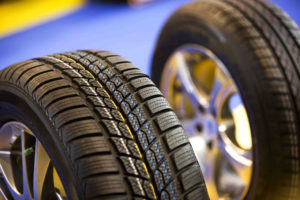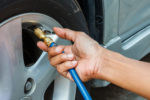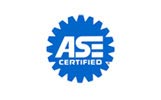Tips That Could Help You Increase Your Car’s Lifespan
 A car’s lifespan is affected by many factors. Many Colorado cars on the road today will last their owners many years or even decades with the help of frequent Greeley car maintenance, but with improper maintenance and care, those same cars could be off the road in less than five years. Maintenance and repairs can be costly, but they usually outweigh the cost of a broken-down car that won’t run.
A car’s lifespan is affected by many factors. Many Colorado cars on the road today will last their owners many years or even decades with the help of frequent Greeley car maintenance, but with improper maintenance and care, those same cars could be off the road in less than five years. Maintenance and repairs can be costly, but they usually outweigh the cost of a broken-down car that won’t run.
Many car owners are unwittingly shortening their car’s lifespan with their maintenance habits, or lack thereof. Here’s how you can improve your car’s lifespan with responsible, everyday practices and habits, and how you could be shortening your car’s lifespan with detrimental habits:
Improve Your Car’s Lifespan with Car Maintenance
Regular check-ups are the key to maintaining things like oil levels and quality, transmission fluid, and brakes. Your oil will start to lose its effectiveness after a few thousand miles, so replacing it often is a part you can play to keep your car on the road.
Aside from regular maintenance check-ups, you should also consider below tips that could help you increase your car’s lifespan:
- Break in your new car and be gentle. Cars, just like shoes or baseball mitts, need to be broken in a bit before they reach their peak efficiency. If you bought a new car recently, keep the engine in the lower RPM range for the first 1,000 miles, if you can. This may sound oxymoronic, but you should also vary your speeds and gears to utilize your car’s full range of performance.
- Warm your cold engines. You probably already know that cold weather, i.e., below freezing, is not the best for your engine. Oil becomes thick and sluggish, battery charges aren’t as strong, and gasoline burns differently. Idling in your car until your cold engine light turns off isn’t the best way to warm your engine up. Idling warms your engine, but slowly, because it’s not working very hard. Instead, sit for a minute (or five if the temperature is below zero), and drive slowly for a few blocks to let your engine warm up efficiently.
- Watch your speed. Speeding may sometimes be necessary. When everyone around you is speeding, it’s actually safer to match their speed, even if it’s above the limit. However, egregiously speeding everywhere you go makes your engine work harder than normal by pumping and using that excess fuel, forcing the pistons and the many other moving parts in your car’s engine to work at faster-than-optimal speeds, which can lead to faster wear and tear on many engine components.
Mistakes that Shorten Your Car’s Lifespan
Looking at your car’s lifespan from the other direction, here are some common mistakes car-owners make that shorten the lifespan of their vehicles and send them to car mechanic experts more frequently:
- A messy interior or exterior. It’s usually what’s on the inside that counts for proper car maintenance, but excessive dirt and grime on the exterior or interior of your car can cause excessive wear and tear in your engine as all those dirt particles enter your system. You should also consider the psychological effects of keeping your car clean. If you put in the work to keep your car spiffy, you’ll be more likely to get regular tune-ups and maintenance.
- Not checking your levels. Regular maintenance is the key to avoiding most costly engine problems, but you can check your tire pressure, oil levels, and transmission fluids yourself. If you don’t have a tire gauge, you can usually find one at an air fill-up station for tires.
- Ignoring symptoms of engine damage. If you hear an unusual rattle in your engine or any other sound it’s not supposed to make, take it in for a check-up as soon as you can. Catching engine trouble early is the best way to avoid serious damage in the future, as the engine problem worsens.
It’s Up to You
Maintenance shops can help you make repairs and avoid even costlier work in the future, but there’s plenty you can do to help your car stay on the road longer.
Looking for reliable Greeley mechanics to provide the maintenance your car needs? Contact us today.
Your Holiday Vacation Car Maintenance Checklist
 Before your holiday road trip this year, you may want to check out some options for car maintenance services in Greeley to make sure your car is in top travel shape. A professional will make sure all the little things that can turn into more concerning issues are in order and ready to compensate for ice, snow, and cold. Whether you’re going to visit grandma or taking a ski trip, there are plenty of things you should check out and repair before you begin your journey to make sure you get yourself and your family to and from your destination safely. Here’s a brief car maintenance checklist to get you started.
Before your holiday road trip this year, you may want to check out some options for car maintenance services in Greeley to make sure your car is in top travel shape. A professional will make sure all the little things that can turn into more concerning issues are in order and ready to compensate for ice, snow, and cold. Whether you’re going to visit grandma or taking a ski trip, there are plenty of things you should check out and repair before you begin your journey to make sure you get yourself and your family to and from your destination safely. Here’s a brief car maintenance checklist to get you started.
Car Maintenance in the Cold
Regular car maintenance means much more in the cold. Hot weather, of course, affects engines, but cars in general don’t like the cold. For more information about cold weather maintenance, click here.
- Protect the exterior
Colorado winters can be harsh for car exteriors. The snow, ice, and road salt can break down your car’s paint job and cause damage over time. Before you head out, give your car a good cleaning and apply a quality car wax to protect against another round of sand, ice, and salt.
- Change your oil
Cold weather is the best time to consider switching from conventional motor oil to synthetic oil because full-synthetic oil flows easier and freer at low temperatures than conventional oil. You can also try a synthetic blend for a similar effect. Be sure to get your mechanic’s recommendations on the best oil choice for your vehicle.
- Take care of your battery
Your vehicle’s batteries are affected by the cold, winter weather. After a long, hot summer, batteries will be sluggish in cold weather, especially if you don’t use your car every day. Test your battery and charging system frequently to make sure your car can start in the cold mornings. The last thing you want is to end up with a dead battery during your travels.
Car Maintenance: Being Prepared
Being prepared is the best way to keep your car up and running in any season, hot or cold. Make sure you’re taking these regular precautions with your car maintenance this winter, and check out this link for more safe travel tips.
- Check transmission and differential fluids
Aside from oil, your car has many other fluid reservoirs that need to be replenished and maintained. Your transmission fluid and other lubricants for other systems like the drive axle don’t have to be changed nearly as frequently as your oil, but they need to be checked all the same. Read your car’s manual to find out how often they need to be changed.
- Belts
Your engine belts make your engine turn. Hold the belts in your hands and turn them sideways so you can see the friction surface. If there’s excess wear, fraying, tears, or cracking, it’s a good idea to have them replaced before any long trip.
- Tire pressure and tread
Your tires will wear down in any weather, so make sure your tread is worn evenly and that your tires have been rotated recently. Excess wear on your tire tread can lead an unsafe situation on the road, especially if the road is slippery and cold.
Conclusion
Making sure your car is safe to travel this winter is all about maintaining the normal functions of all of your car’s many moving parts. Make sure your fluids are doing what they’re supposed to do and that your car parts are functioning properly in the cold.
Looking help beyond a holiday car maintenance checklist? Please call us to schedule an appointment for your vehicle’s maintenance today.
The Five Telltale Signs That Your Car Needs a Mechanic
 How do you know if your car needs a mechanic visit? Aside from regularly scheduled tune-ups and top-offs, your car will periodically need to be checked out by a Greeley auto repair professional to fix certain issues and prevent irreparable damage. In most vehicles, a small problem can soon turn into a catastrophic one quickly, so visiting a mechanic as soon as possible is important.
How do you know if your car needs a mechanic visit? Aside from regularly scheduled tune-ups and top-offs, your car will periodically need to be checked out by a Greeley auto repair professional to fix certain issues and prevent irreparable damage. In most vehicles, a small problem can soon turn into a catastrophic one quickly, so visiting a mechanic as soon as possible is important.
Here are five symptoms you should pay attention to and seek the help of an auto repair professional if you see them in your car:
Smoke Coming From Under the Hood
You probably already know that smoke coming from under your hood is never a good sign. Sometimes, smoke coming from your exhaust pipes can also show potential damage to the engine or other problems.
If you notice that blue smoke is coming from your exhaust pipe or your hood, stop your car as soon as possible and get a tow to the garage. Blue smoke means engine oil is leaking. Low oil levels can lead to serious engine problems and could mean thousands of dollars in repairs.
If you notice white smoke coming from your hood or an excessive amount coming from your tailpipe, it’s probably steam. Your engine is overheated. While this isn’t as serious of a problem as leaking oil, you’ll need to wait for your engine to cool down before you can add coolant. Still, you should seek professional help to find out why your engine overheated in the first place.
Check out these tips on finding a trusted, professional mechanic.
Certain Bad Smells
No one’s car will smell like fresh alpine valleys or roses, but certain smells can mean engine trouble. If the inside of your vehicle ever smells like you’re standing right behind your car’s tailpipe you’re probably breathing carbon monoxide, a highly toxic and potentially deadly gas. Roll your windows down on your way to the mechanic.
If you smell burning rubber, it means you burnt out your tires (you’d know it if you did this) or your drive belts or accessory belts are worn out or damaged. It could also mean that a rubber hose is dislodged and melting.
Unsettling Noises
If you hear a tapping or popping sound, it could be a problem with your engine’s cylinders. If you hear a grinding noise when you start your car, it could be your starter motor. Grinding when you shift gears is a sign that you could need a transmission replacement.
Warning Lights
You can take warning lights on your dashboard with a grain of salt sometimes, but there are a few lights that you should take heed of immediately: Check Oil/Oil Level Low, Oil Pressure Low, and Check Engine. Oil levels and pressures are very important because your oil prevents your engine’s various moving parts from rubbing against each other, causing serious damage. If you’re unsure of how to ameliorate your oil warning light, take your car to a mechanic.
That pesky Check Engine light can mean any number of things, from not screwing your gas cap on properly the last time you re-fueled to your pistons are about to fly through your hood. After you’ve checked routine things like gas caps and oil levels, take your car in if the Check Engine light doesn’t turn off.
Jerky Driving
If your car seems to lurch and stop when you’re not applying the brake, it’s a good sign of engine trouble. Not having full control of the accelerator can cause serious driving problems, so it’s a good idea to have it checked out as soon as possible.
Watch for these telltale signs of engine trouble, and if you see these signs, don’t hesitate to contact a mechanic immediately. When your car needs a mechanic, waiting too long could further the damage.
Looking for a mechanic in Greeley? Call us today.
Tips on When to Replace Your Tires
3 Easy Ways To Tell If The Tires On Your Car, Truck or SUV Need To Be Replaced Before It’s Too Late.
 Tires. Of all the most common problems with cars, tires are often the most overlooked. But, if your car doesn’t drive smoothly, wobbles, or makes curious noises at top speeds, it could be because of your tires. Your tires are where your car meets the road. They’re your car’s first and only touchpoint to the street. When they wear down, they can cause all kinds of wearing problems that can lead to more expensive repairs than simply replacing them would have been. Tires can be underinflated, overinflated, worn down, leaky, and more. While you don’t necessarily need to replace your tires to solve these common problems, there are plenty more scenarios when replacing your tires is the most cost-effective and safe thing you can do.
Tires. Of all the most common problems with cars, tires are often the most overlooked. But, if your car doesn’t drive smoothly, wobbles, or makes curious noises at top speeds, it could be because of your tires. Your tires are where your car meets the road. They’re your car’s first and only touchpoint to the street. When they wear down, they can cause all kinds of wearing problems that can lead to more expensive repairs than simply replacing them would have been. Tires can be underinflated, overinflated, worn down, leaky, and more. While you don’t necessarily need to replace your tires to solve these common problems, there are plenty more scenarios when replacing your tires is the most cost-effective and safe thing you can do.
Here are a few helpful tips from Greeley auto repair and tire experts:
The Penny Test
You may have heard of the ‘penny test,’ in which you insert an Abraham Lincoln penny into the tread groove of a worn tire. If the tread covers Lincoln’s head and you notice no adverse effects driving in snow, slush, or rain, you’re good to go. Mechanics test tires for remaining depth of tread grooves. When the remaining depth reaches 2/32 inches, it’s time for new tires.
You can do a penny test at home, obviously, but the main test you should pay attention to is how the car brakes and maneuvers on wet or slick roads.
What Are Tire Grooves for?
Tire tread grooves are mainly for managing wet conditions on the road. The treads direct water, snow, and ice away from the tires and out from under them. Driving on dry roads with worn-down or even bald tires won’t give you much trouble, usually. Just look at the racing slicks stock cars use in races.
If your tread is getting low, you might not notice a difference until you have to brake suddenly or you’re driving in wet or icy conditions. About nine percent of all collisions in the US are tire-related, according to the National Highway Traffic Safety Administration.
Which Tires Should You Buy?
That depends on the car and what you use it for. To help determine that, let’s run down a few tire terminology basics:
All tires have a speed rating, as denoted by the letters S (112mph) through Y (186mph). This is the tire’s maximum speed when carrying a load. Higher speeds require better grip. Aside from the speed rating, tires also come in different sizes, which are written like this: 215/60R16. The 215 in this example is the cross-section width, which is the widest distance from one sidewall to the other. The 60R is the ratio of sidewall height to tire width, and the 16 is the size of the wheel in inches. Most cars list recommended tire size and specifications in their owner’s manuals.
As for tire type, if you’re driving on rough roads often or carrying around large payloads, it’s a good investment to get a quality type of tire, or even a specialty tire that can help you in adverse conditions. Analyze how you use your car and how many miles it’s been since your last tire change to determine which kind of tires you need.
Looking for a trusted tire and mechanic shop in Greeley? Call us today.
Winter Driving: Fuel Economy Tricks
 Fuel economy tricks are helpful to anyone who cares to save money and use their vehicle as efficiently as possible. Your fuel economy is affected by a number of different things, including your vehicle condition, driving speed, acceleration, traffic, road conditions, and even weather. As you most likely already know, vehicles tend to use more fuel in the winter.
Fuel economy tricks are helpful to anyone who cares to save money and use their vehicle as efficiently as possible. Your fuel economy is affected by a number of different things, including your vehicle condition, driving speed, acceleration, traffic, road conditions, and even weather. As you most likely already know, vehicles tend to use more fuel in the winter.
Because vehicles run on many different fluids, the drop in temperature means your vehicle has to work harder to keep the changes to these fluids as minimal as possible. As a result, your vehicle ends up burning more fuel. Not to mention that driving during the winter time often means driving in harsh temperatures and conditions that also affect your fuel economy. So how can you help your vehicle use fuel most efficiently this winter? Let’s talk about a few helpful fuel economy tricks.
Letting Your Car Run While Idle
In the first of our fuel economy tricks, it’s necessary for us to debunk a myth. Many people are under the impression that it is necessary to warm up your car for some time before you drive off in the winter. While it’s certainly more comfortable to step into a warm car, this is not necessary. Your vehicle actually does better warming up while driving. According to most manufacturers, your car only needs about 30 seconds to warm up before you drive off slowly. Allowing it to run while sitting idly will only waste fuel.
Park Your Car in a Warm Garage
Hopefully, you can avoid having to drive off in a miserably cold car. Parking your car in a warm garage will help keep the various fluids in your vehicle closer to operating temperature. Your vehicle will use less fuel because it will take less time to warm up. When your car is parked in the garage, you won’t be as likely to use your remote start and leave it running idly for too long. If your garage is currently too full for your car, you’ll find it a worthwhile task to clear it out and make space. Not only will your car warm up faster, but you won’t have to scrape away ice early before work!
Drive Wisely in the Stop and Go Traffic
Depending on where you live, you may experience stop and go traffic all the time. However, winter can bring even more of it with adverse weather conditions. Always give yourself plenty of time to slow down and speed up. This will help you save fuel and keep you and the drivers around your safer. Fast accelerating and hard braking are a sure way to harm your fuel efficiency, no matter the weather conditions.
 Keep Your Tires Properly Inflated
Keep Your Tires Properly Inflated
Properly inflated tires mean better traction and because of that, better fuel economy. Remember that in cooler temperatures, the pressure in your tires will go down. Make sure you consistently check your tire pressure and have them inflated to the right amount of air.
Combine Your Trips
It takes more fuel to start a cold engine. That’s why, if possible, you should combine errands in your day so that you are not continually starting up a cold car.
Get Rid of Extra Weight
If you have traveling containers on top of your car but are not currently using them, remove them. Remove any unnecessary items that have collected in your car. The less weight your vehicle has to pull, the less fuel it will have to burn.
Maintain Your Vehicle
Of course, proper maintenance of your vehicle will help you any time of the year. Make sure you have consistent engine checks to ensure everything is running smoothly. Change your oil consistently. Use the oil recommended by your vehicle’s manufacturer. A poorly maintained vehicle is sure to suffer in the area of fuel economy.
If you have not had your vehicle tuned up for this winter, be sure to contact your trusted mechanic to schedule your appointment.
We hope these fuel economy tricks help you run your car more efficiently this winter!
 Keep Your Tires Properly Inflated
Keep Your Tires Properly Inflated


